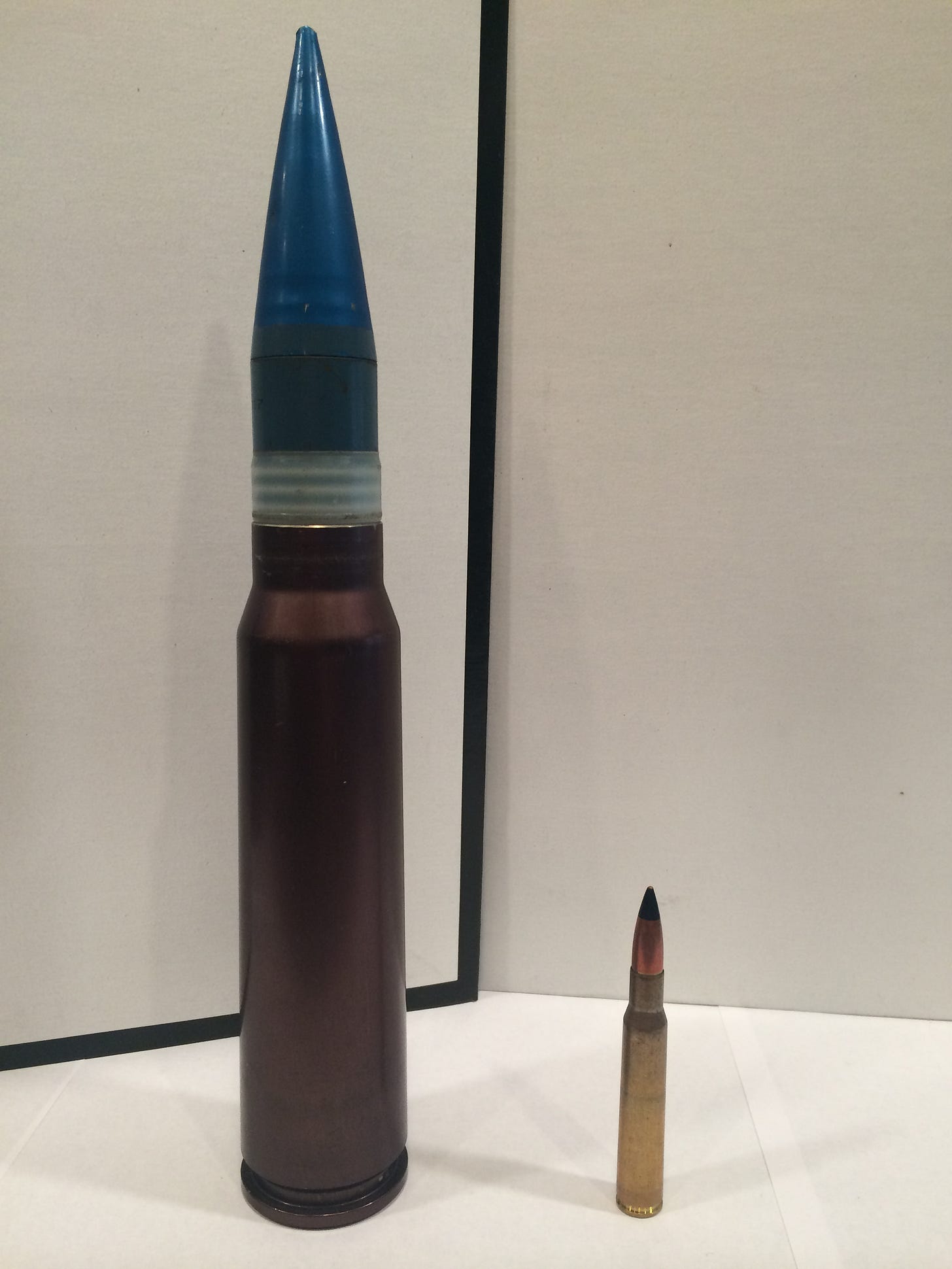5: Gavin Baker on AI, Working with Bezos, and a Gun Bigger than a VW Beetle
"early on, the gun seemed to spend almost as much time trying to kill the aircraft’s pilot as the enemy"
You don't use science to show that you're right, you use science to become right. --xkcd
Looks like many of you didn’t get the #4 edition in their inbox. I apologize, I’m learning that email isn’t like publishing on the web, and various filters are sensitive to how many images and embeds and such… I’m a visual guy and would put an image next to every section if I could. It’s kind of annoying to not be able to do what I’d like to do, but life is trade-offs ¯\_(ツ)_/¯
In the boring-but-useful-tip category: If you put “LibertyRPF@substack.com” in your email contacts, you’ll be sure that this newsletter won’t be caught by some filter and end up where it’s not supposed to go.
Investing & Business
-Google will keep nearly all its 200,000 employees working from home "until at least next July"
Google will keep its employees home until at least next July [...]
The move will affect nearly all of the roughly 200,000 full-time and contract employees across Google parent Alphabet Inc., and is sure to pressure other technology giants that have slated staff to return as soon as January. [...]
Mr. Pichai himself has been personally fascinated by the pandemic, according to people who have spoken with him. He began reading research papers on the virus in January, before it was headline news, and spearheaded the initial March decision to close company offices. (Source.)
Seems like other tech companies, big and small, will probably follow suit in some fashion. Maybe not with a date as far out, but at least providing a little bit more certainty to employees about a timeline has to help.
Dave Kellog: BTW, should we call it WFH or LAW (living at work)?
It’ll be interesting to see how various companies adapt to this extended work-from-home period, and which cultures are improved (or at least not hurt too badly) and which are damaged. I know that Apple has a lot of face-to-face meetings and groups collaborate closely and like to see prototypes of software and hardware in person… While companies like Elastic were always remote from the start and probably won’t really notice any difference.
Speaking of Google, The Markup looked at 15,000 popular search keywords and found that Google “devoted 41 percent of the first page of search results on mobile devices to its own properties and what it calls ‘direct answers,’ which are populated with information copied from other sources, sometimes without their knowledge or consent… When we examined the top 15 percent of the page, the equivalent of the first screen on an iPhone X, that figure jumped to 63 percent.” More here.
-New Interview with Gavin Baker, “AI is Eating the World”
He’s always worth listening to, either on his Twitter, Medium, or in Interviews.
Gavin runs Atreides Management, probably the best-named fund out there.
His check-out register analogy for CPUs and GPUs in the interview above was quite good, I think I’ll steal it next time I’m trying to explain the difference to a non-technical person. And how can I not love the casual Dyson Sphere reference?
This discussion of semiconductors reminded me of this great Jim Keller timeline anecdote (he’s one of the best semiconductor designers/architects ever, and recently left Intel, but he has also worked at DEC, AMD, SiByte, Tesla, etc):
In 2004 [Keller] moved to serve as the Vice President of Engineering at P.A. Semi, a company specializing in low-power mobile processors. In early 2008 Keller moved to Apple. P.A. Semi was acquired by Apple shortly afterwards, reuniting Keller with his prior team from P.A. Semi. (source)
He basically joined Apple, probably convinced them to acquire his former team, and that team was the foundation of Apple’s amazing success at doing its own custom silicon and leading the industry ever since (based on the ARM architecture that they helped create in the late 1980s, as I mentioned in letter #3).
Here’s a recent Jim Keller interview that I enjoyed: video here & audio-only version here.
-Working for Jeff Bezos in the early 2000s
Dan Rose has a good thread of things he learned during his time at Amazon, including during the creation of the Kindle.
1/ Learn and adapt. Amazon’s second largest business was decimated when Apple digitized the music industry. CD sales had been important to Amazon, but they were dwarfed by book sales. Jeff took the lessons from iPod/iTunes and applied them to Kindle.
2/ Ignore the “institutional no”. Amazon’s core retail business was pummeled after dot-com crash, and we were still pulling out of the tail spin in 2004 when Jeff started the Kindle team (same year he started AWS team). Everyone told him it was a distraction, he ignored them.
3/ Cannibalize yourself. Steve Kessel was running Amazon’s media business in 2004 (books/music/DVD’s). Books alone generated more than 50% of Amazon’s cash flow. Jeff fired Steve from his job and reassigned him to build Kindle. Steve’s new mission: destroy his old business.
You can keep reading here.
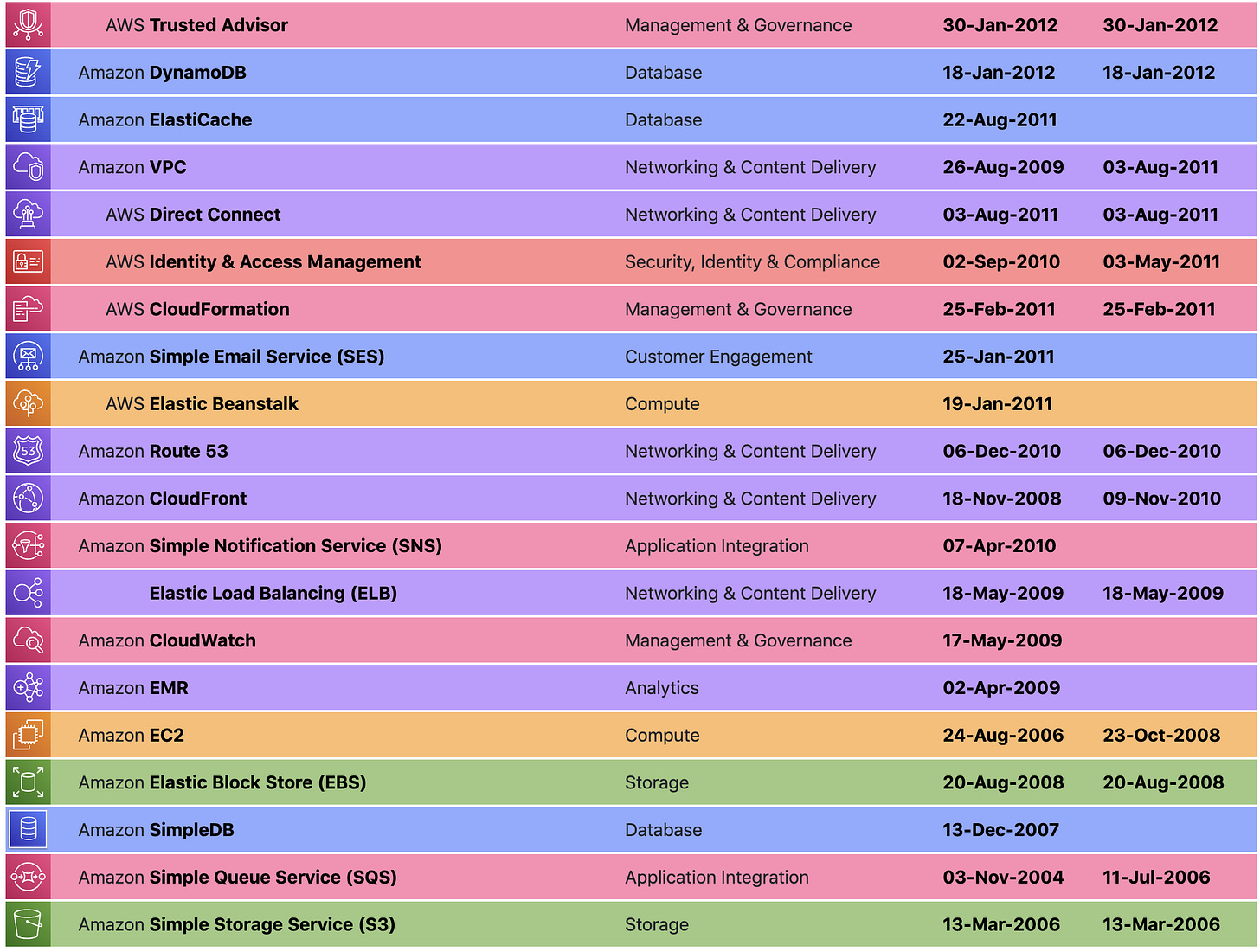
-A History of AWS Services
Jerry Hargrove has a page tracking Amazon Web Services (AWS) Services chronologically, from March 2006 to last month.
They’re color-coded by category, and you can click on each to go see that product’s page, or click on the date to see the press release of when it was launched. Very good way to get an idea of the development velocity there.
-Data Latency Advantage in the 1960s
From the book ‘More Money Than God’ by Sebastian Mallaby:
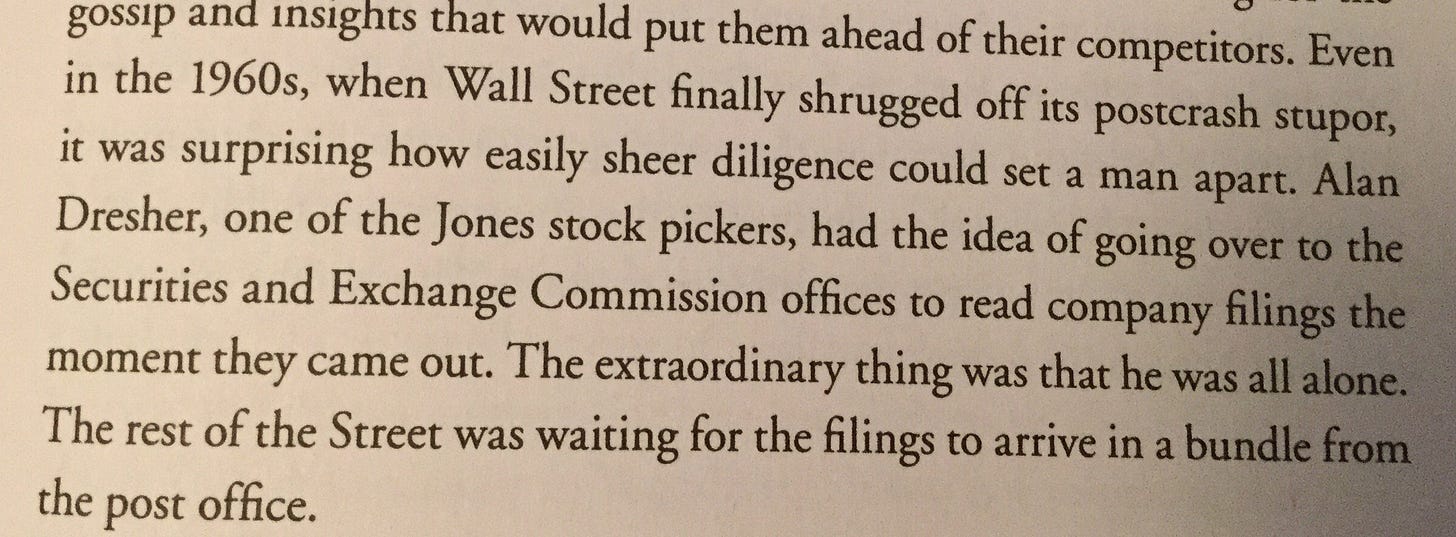
-‘Nintendo, Disney, and Cultural Determinism’ by Matthew Ball

Great piece on Nintendo:
I’m often asked about Nintendo (one of few companies I adore more [than Disney]). Many believe that Nintendo is Disney circa 2014 or 2015 or 2016 or 2017 — and thus poised for substantial growth as it makes the transition to online or D2C or OTT distribution or mobile or [new thing]. And certainly, there are many similarities. There is no other gaming company with more beloved and long-running IP, a stronger culture of creativity in storytelling, a deeper history of immersive/technological innovation, more resonant content brand, and so on. […]
However, the “Nintendo is Disney” thesis is deeply flawed. It feels more like a desire to apply a pattern than to find a real analogue. Elements of Nintendo certainly represent Disney, but they represent Disney insofar as both companies are best in class creators of four-quadrant, multi-generational content. Otherwise the businesses are fundamentally different, their management styles fundamentally different, and their approaches to content itself are fundamentally different, too. [...]
Although Nintendo operates a hardware platform like Microsoft’s Xbox or Sony’s PlayStation, 85% of software sold for Nintendo hardware is now made by Nintendo. This is the reverse of industry averages (e.g. 85%+ of PlayStation playtime comes from games not published by Sony).
You can, and should, read the whole thing here.
-Trivia: Microsoft Had Almost 92% Gross Margins in 1997
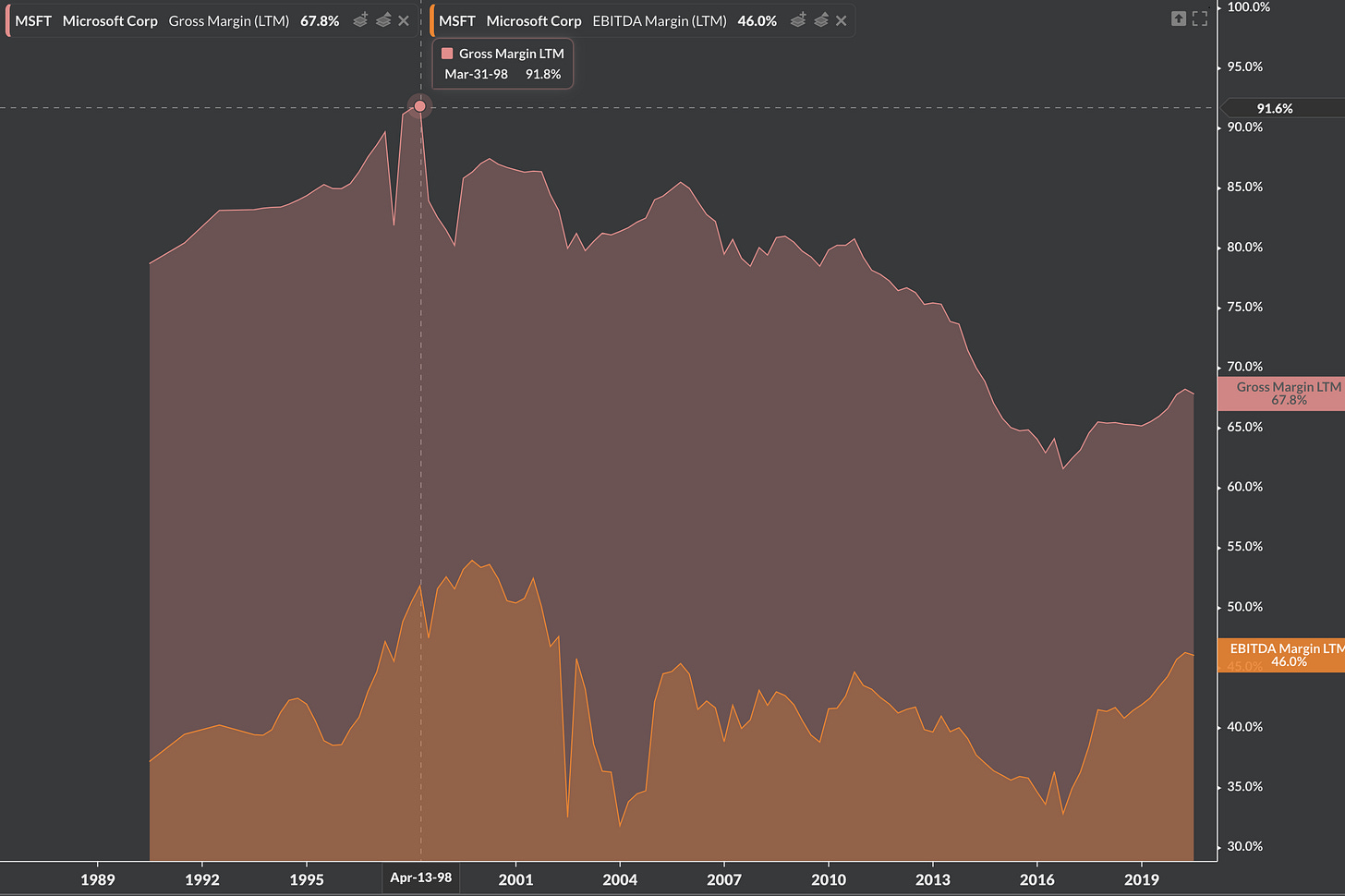
-Rory Sutherland interview by Jim O’Shaughnessy
Not much to say except: listen.
I’ve heard a lot of good things about his book ‘Alchemy’, but I haven’t had a chance to read it yet.
Science & Technology

-A Gun So Impressive, They Had to Build a Plane Around it
Photo: A-10C Warthogs of the A-10 Demonstration Team sit on a flight line in Wyoming, 30 Jul. 2020. (USAF)
For those of you who don’t know the A-10 Thunderbolt II (aka Warthog), it’s an interesting plane with an interesting origin story that starts with its unique weapon:
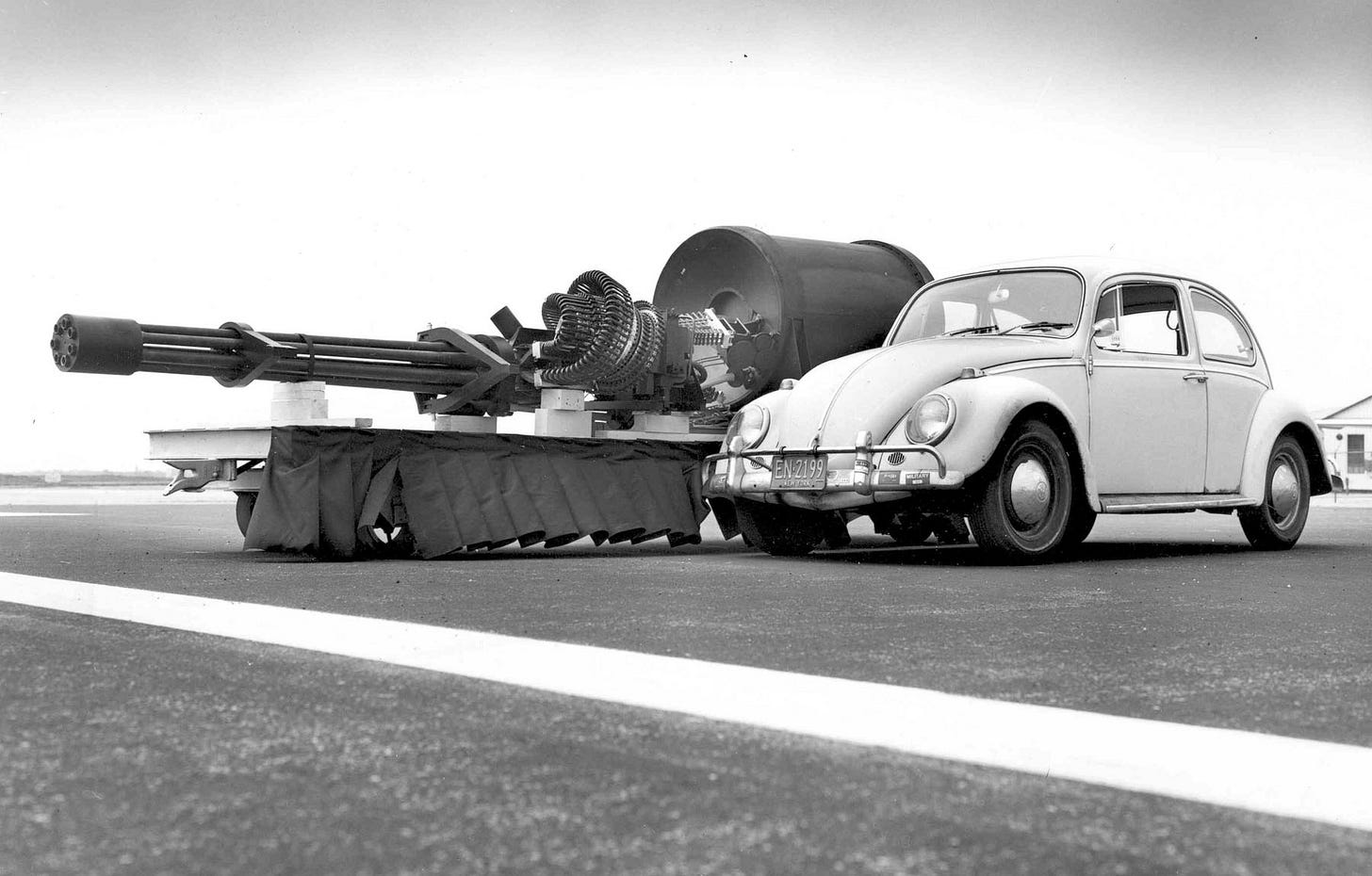
In 1973, the Air Force picked General Electric as the winner of the separate gun competition with its huge seven-barrel rotary cannon, which weighed in at approximately 700 pounds with its associated components and ammunition feed system [...]
The [GAU-8 Avenger] spits out nearly 70 rounds every second. Each complete 30mm cartridge is bigger than a typical beer bottle and the projectiles alone – either full of high explosive and an incendiary mixture or an armor piercing design with a depleted uranium core – weigh three quarters of a pound. It takes two hydraulic motors to spin the barrels and work the system.
When the pilot pulls the trigger, the gun breathes literal fire and shakes and rattles the airframe. It spews huge clouds of hot gun gas full of particulate matter as it makes its signature “BRRRRT!” sound. There’s a long-standing urban legend that the shooting actually slows the plane down. [...]
early on, the gun seemed to spend almost as much time trying to kill the aircraft’s pilot as the enemy, producing potentially blinding smoke and fire, fumes that threaten to choke out its engines, and violent vibrations.
-“Corning's Gorilla Glass Victus is a significant improvement in scratch prevention”
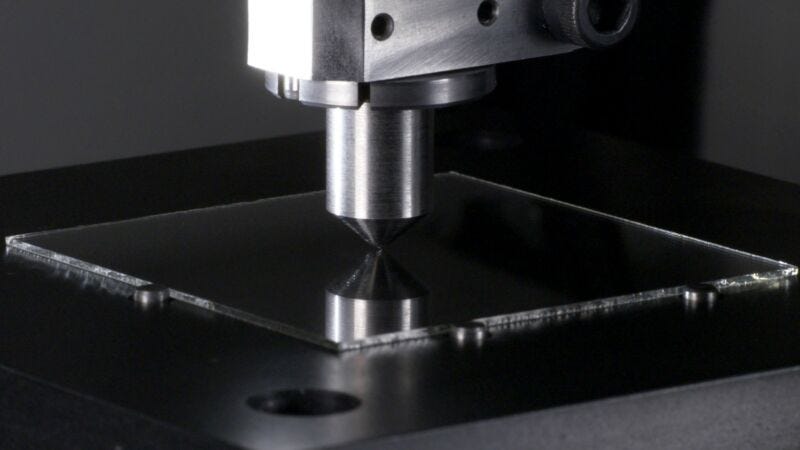
the last time Corning prioritized [scratching] as a threat was in Gorilla Glass 3, which came out all of seven years ago. Since then, smartphones have gotten much better about bouncing back from sidewalk run-ins, but handle an inadvertent key dig about the same as they did when the iPhone 5S came out. […]
Victus promises double the scratch resistance of 2018’s Gorilla Glass 6. It performs better in a drop test, too, surviving a 2-meter fall compared to its predecessor’s 1.6m durability. (Source.)
Probably another factor that will help elongate further replacement cycles, at least for higher-end phones. Now that they’re all pretty fast and have headroom in that department, durability has been a bigger factor.
-Larry Brilliant Interviewed by Steven Levy on the Pandemic
Brilliant is an epidemiologist probably best known for leading the successful effort to eradicate smallpox (a terrible disease — don’t click this link lightly), which has to be one of humanity’s most impressive feats, if you consider how hard it is to get to eradication of a disease (the last 0.1% is probably as hard as the first 80%, I’d guess), spoke with Levy:
In March, we were just beginning to see these horrific CT scans or x-rays of people with ARDS, acute respiratory distress syndrome, where they had these big circles of holes in their lungs, and we were thinking this is pretty much a respiratory disease. Since then we have learned that this virus attacks almost every organ in the body. [...] now we can begin to understand that this virus attacks the circulatory system, it attacks the vascular and nervous systems, it attacks the respiratory system, it attacks our ability to bring in oxygen. […]
the big surprise to me is the kind of pan-organ nature of its attack. It gives the lie to anybody who thought that a comparison with influenza was in the ballpark.
You paint quite a picture.
This is a big f***ing deal. If I would not be excommunicated from the world of science, I would call this an evil virus, but I can’t do that because I can’t impugn motives to it. But if I could, I would call it that. […]
So all that work we did to flatten the curve [in the US] was squandered?
It was absolutely not used as effectively as it should have been. To this day we do not have a federal pandemic plan.
The Arts
-Interview with Patrick McKenzie (aka Patio11) from Stripe
David Perell has a great interview with Patio11 on his North Star podcast. The nerds and geeks among you have probably known Patrick’s writings for years (“marketer and software engineer Patrick McKenzie, who writes mostly about software-as-a-service businesses”), but even for the others, he’s a very clear thinker who’s worth listening to.
He now works at Stripe, and part of the podcast is about the culture of quality and craftsmanship at the company, but he also covers his approach to writing and creating things. Lots of insights, too many great quotes to cover here. I recommend it.
I also love the recursive beauty of Patio11’s Law (which wasn’t coined by Patrick, but inspired by him):
Patio11's Law: The software economy is bigger than you think, even when you take into account patio11's Law.
-1422 Paris map on top of today Paris
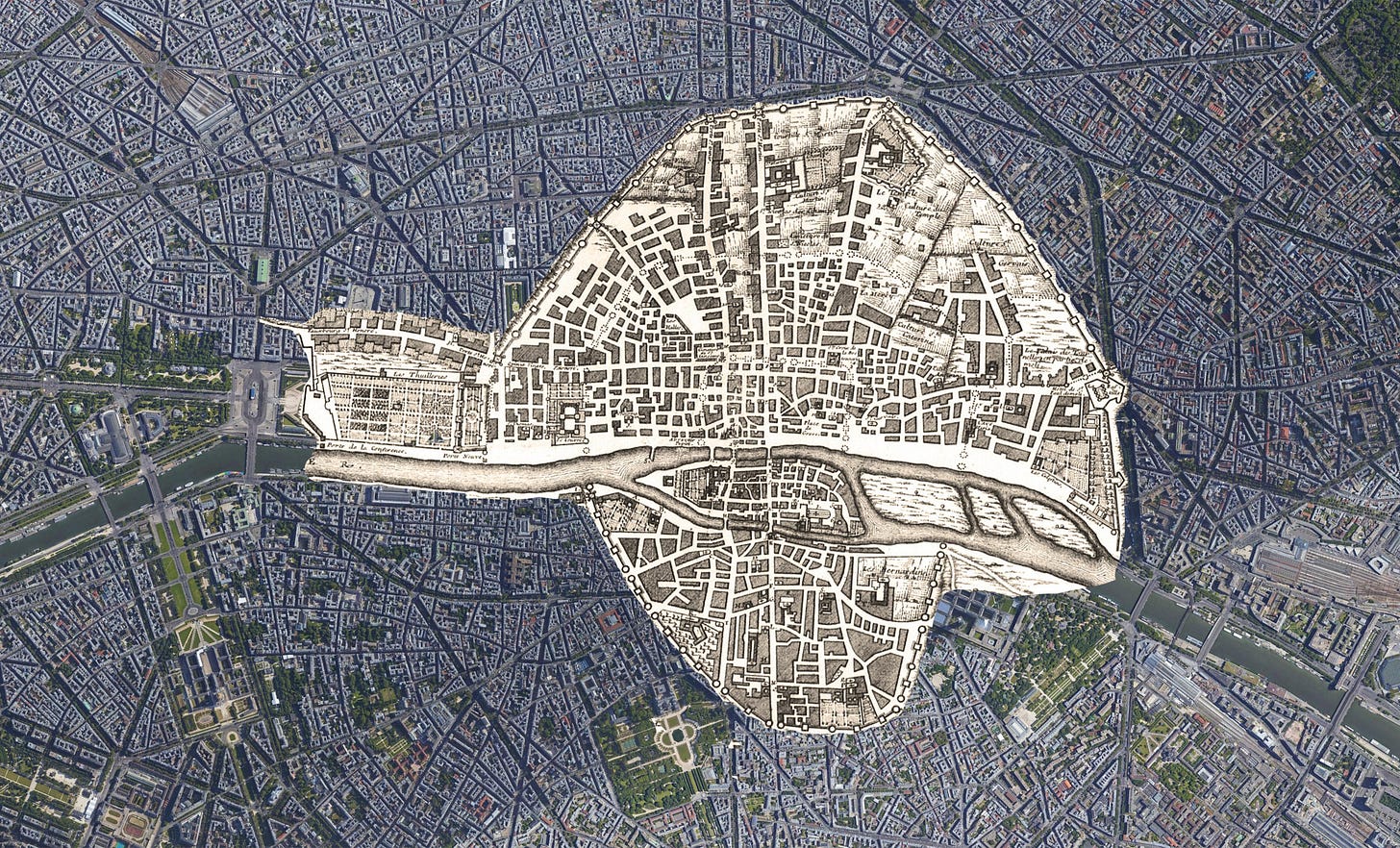
-Charlie Chaplin held by Douglas Fairbanks. Wall Street, 1918.

1918? Maybe I just have pandemic on the mind, but this crowd seems awfully densely packed…



